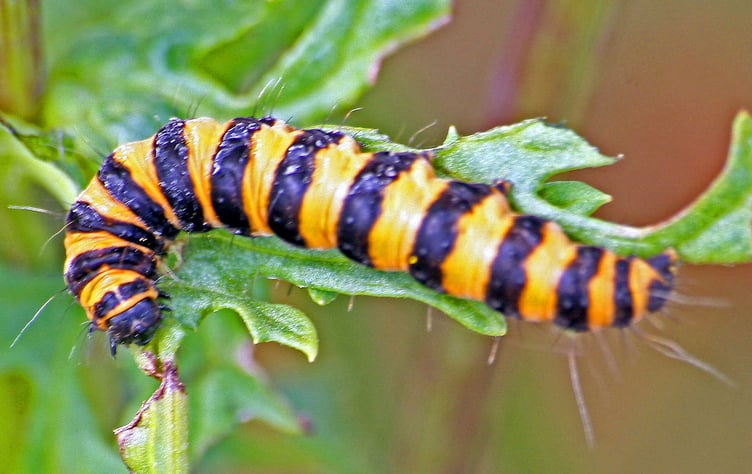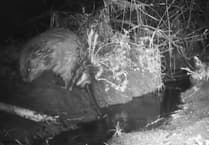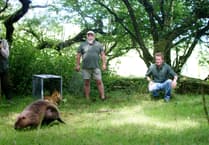Every year after the corn in the path field near the village has been harvested, I wait a few days and then walk around looking for wild flowers that have bloomed now they can get some sunlight. Unfortunately, if I wait too long the field will have been ploughed, but last week I did find a few field pansies growing among the corn stubble.
These pansies are often unfairly called weeds by farmers as they grow on and around arable land. In this field the blooms have four white petals with a large yellow petal at the bottom, but sometimes the flowers are pale mauve and yellow in colour.
The flowers of Lords and ladies plants have now lost their sheath, known as a spathe, that contained the flower and now have a cylindrical-shaped cluster of extremely poisonous berries on their stems. On walks around the village it is easy to spot them, usually just a single stalk but sometimes they stand in a group and their roots have a high starch content that was once used to stiffen linen ruffs worn by the ‘well to dos’.
Looking around and beneath the vegetation of the road hedges it’s possible to spot some of the tiny mushrooms that grow in sheltered positions. I found a group of very small Marasmius Ramealis, some of which were only about 5mm across, growing on a dead stalk of a bramble. For some reason these mushrooms have acquired the name ‘twig parachutes’ and can be seen throughout summer and autumn.
The running stems of dog roses still have their leaves and looking carefully its possible at this time of the year to find robin’s pin cushions growing beside the leaves. These are fibrous growths caused by the larvae of the gall wasp Diplolepis rosae, which live in the gall’s hardened centre. Common and widespread, they are green when formed but take on a reddish tinge as they age.
Up the hill near a local farm, surface rain water runs alongside the road and very often creates a flooded ditch where I noticed some pink flowers of marsh woundwort plants that were taking advantage of the damp soil beside the water. Their leaves were used by field labourers during the sixteenth century as poultices on wounds caused by bladed farm implements. Its cousin the Field Woundwort is much more abundant in the countryside but its scent, almost a stink, put it into second place as a healing aid.
I always take a good look at ragwort plants as this is where the easily recognisable, red and black cinnabar moths lay their eggs. Ragwort leaves are the favourite food of the caterpillars that are as unmistakably recognisable with their transverse bands of black and yellow. A group of them will soon strip the leaves off the plant leaving just the stem.
I saw a large white butterfly in the garden that was looking for a cabbage to lay its eggs on. She didn’t find any because I gave up on growing greens as these butterflies always ravaged my cabbages to skeletons.





Comments
This article has no comments yet. Be the first to leave a comment.